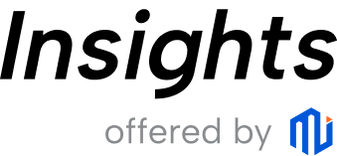The Best High-Yield Dividend ETF to Own for the Next 10 Years
Key Points
Companies must pass key tests to be included in the Schwab U.S. Dividend Equity ETF.
This fund has averaged a solid dividend yield of over 3% for the past 10 years.
Its 0.06% expense ratio is one of the lowest for an ETF in its category.
- 10 stocks we like better than Schwab U.S. Dividend Equity ETF ›
Warren Buffett once said, "If you aren't willing to own a stock for 10 years, don't even think about owning it for 10 minutes." This applies to any stock, but especially dividend stocks, because most of the value typically comes from holding long term and taking advantage of the compound effect.
To get an above-average dividend yield (compared to the S&P 500) while minimizing the risks that come with investing in individual stocks, investors should consider a dividend-focused exchange-traded fund (ETF). They can be the best of both worlds with good payouts and relative stability.
Where to invest $1,000 right now? Our analyst team just revealed what they believe are the 10 best stocks to buy right now. Continue »
If you're looking for a high-yield dividend ETF you can comfortably hold for a decade, look no further than the Schwab U.S. Dividend Equity ETF (NYSEMKT: SCHD). It's one of the more popular dividend ETFs on the stock market, and for good reason.
The fund's criteria help to vet companies beforehand
The Schwab U.S. Dividend Equity ETF mirrors the Dow Jones U.S. Dividend 100 Index. Unlike some dividend indexes that focus mainly on dividend yields, the Dow Jones U.S. Dividend 100 Index has a more rigorous criteria for being included. To make the cut, a company must show the following things:
- At least 10 years of dividend payouts
- A history of annual dividend increases
- A strong balance sheet and consistent cash flow
Due to the criteria, you can be sure the companies in this ETF are thoroughly vetted, which is important when you're investing long term and plan to hold on to the stock for at least a decade. Below are the Schwab fund's top 10 holdings and how much of the ETF they make up:
| Company | Percentage of the ETF |
|---|---|
| Texas Instruments | 4.36% |
| PepsiCo | 4.24% |
| Chevron | 4.23% |
| ConocoPhillips | 4.15% |
| Cisco Systems | 4.08% |
| Merck | 4.00% |
| Amgen | 3.99% |
| AbbVie | 3.93% |
| Bristol Myers Squibb | 3.85% |
| Coca-Cola | 3.80% |
Data source: Charles Schwab. Percentages as of July 18.
These may not be flashy companies, but they're reliable and have businesses set up for the long term.
A history of consistently good dividend yields
Dividend yields will inevitably fluctuate as stock prices change, but the Schwab fund has averaged a dividend of at least 3% over the past decade. This is a much better average than the S&P 500 during that span.

SCHD Dividend Yield data by YCharts
If we assume that the Schwab U.S. Dividend Equity ETF maintains a yield of at least 3% (emphasis on "assume"), that could pay investors at least $30 per $1,000 invested annually. That won't make you the next Jeff Bezos, but it adds up over time, especially when reinvested to buy more shares.
Unlike an individual company that has consistent dividend payout amounts, payouts from this ETF (and most dividend ETFs) fluctuate because companies pay out dividends at different times. Still, it should continue to fit the "high yield" criteria.
Low fees ensure you keep more money to yourself
An aspect of the Schwab U.S. Dividend Equity ETF that shouldn't be overlooked is its low expense ratio of 0.06%, which works out to $0.60 per $1,000 invested. Although small differences in expense ratios may not seem like a big deal, they noticeably add up.
For perspective, let's assume you invest $500 monthly into two ETFs, one with a 0.06% expense ratio and one with a 0.25% expense ratio. If you average 10% annual returns for 10 years, here's how your investments would stack up with each:
| Expense Ratio | Amount Paid in Fees | Investment Total |
|---|---|---|
| 0.06% | $887 | $94,737 |
| 0.25% | $3,664 | $91,960 |
Data source: Author's calculations using the SEC compound interest calculator.
What seems like a slight 0.19% difference on paper turns out to cost thousands more over a decade. That's money that could've been used to make more money, cover expenses, or put toward a personal purchase you've had in mind.
Dividends are a great way to earn money in the stock market without depending solely on a stock or ETF's price appreciation.
Should you invest $1,000 in Schwab U.S. Dividend Equity ETF right now?
Before you buy stock in Schwab U.S. Dividend Equity ETF, consider this:
The Motley Fool Stock Advisor analyst team just identified what they believe are the 10 best stocks for investors to buy now… and Schwab U.S. Dividend Equity ETF wasn’t one of them. The 10 stocks that made the cut could produce monster returns in the coming years.
Consider when Netflix made this list on December 17, 2004... if you invested $1,000 at the time of our recommendation, you’d have $636,774!* Or when Nvidia made this list on April 15, 2005... if you invested $1,000 at the time of our recommendation, you’d have $1,064,942!*
Now, it’s worth noting Stock Advisor’s total average return is 1,040% — a market-crushing outperformance compared to 182% for the S&P 500. Don’t miss out on the latest top 10 list, available when you join Stock Advisor.
See the 10 stocks »
*Stock Advisor returns as of July 21, 2025
Stefon Walters has positions in Coca-Cola. The Motley Fool has positions in and recommends AbbVie, Amgen, Bristol Myers Squibb, Chevron, Cisco Systems, Merck, and Texas Instruments. The Motley Fool has a disclosure policy.



